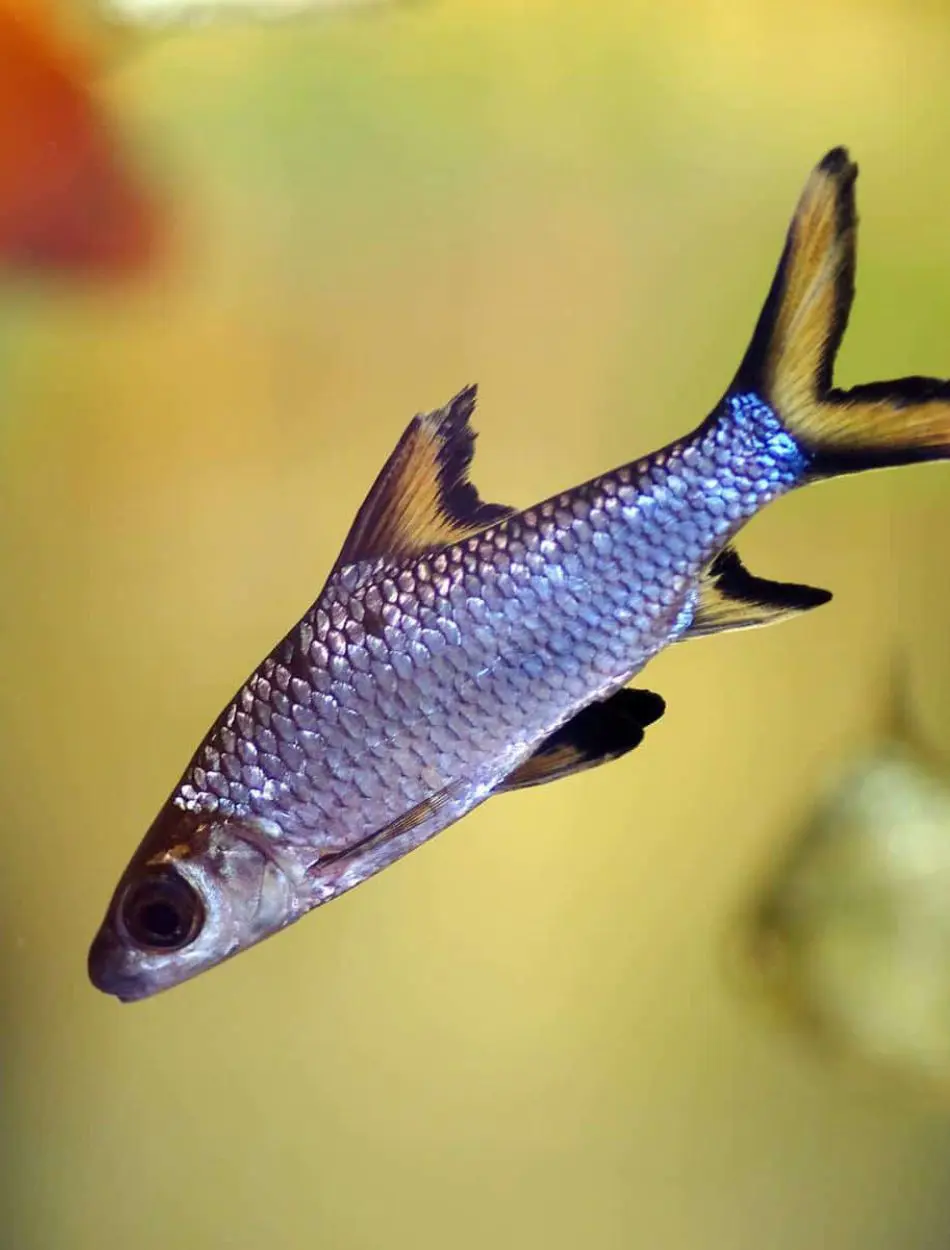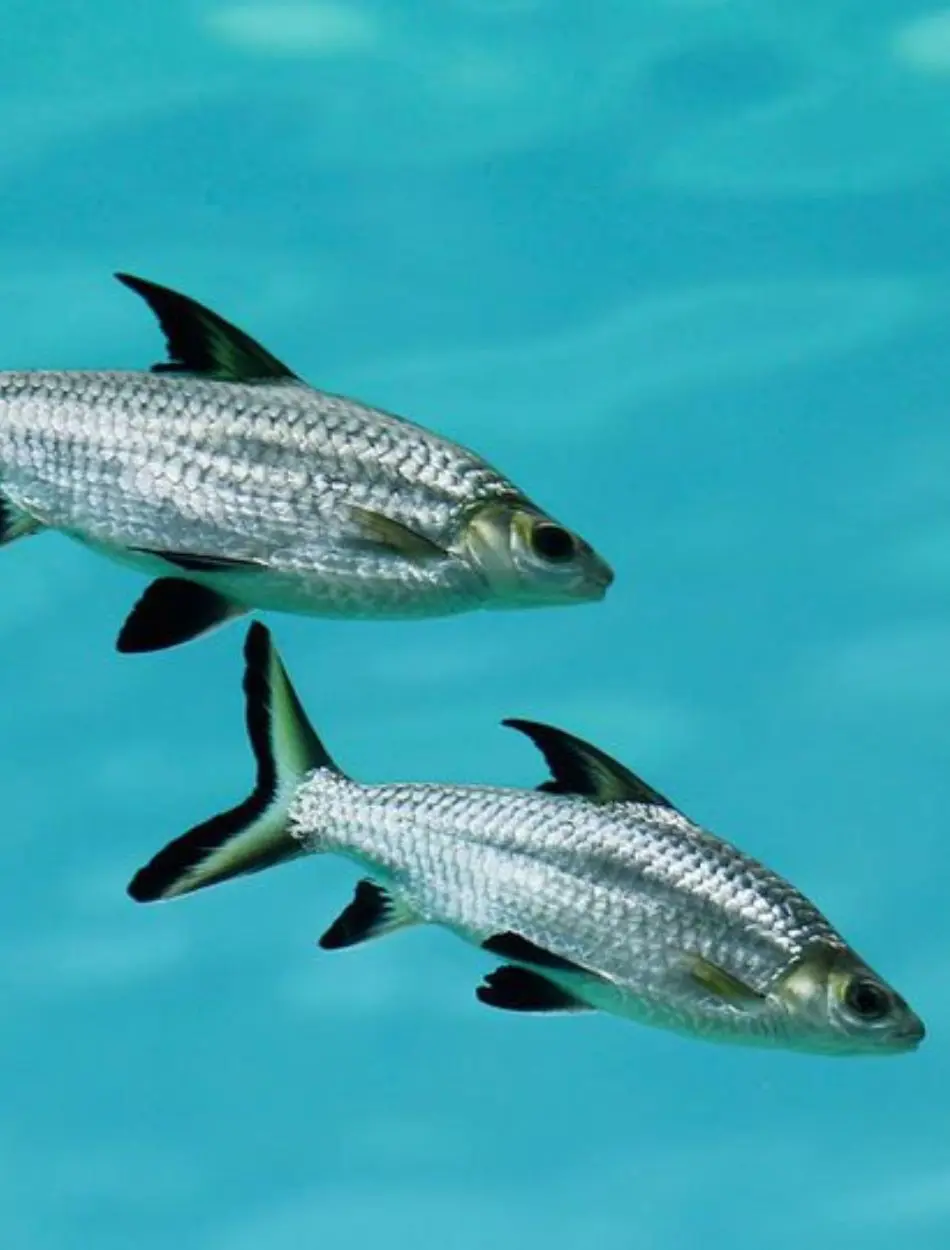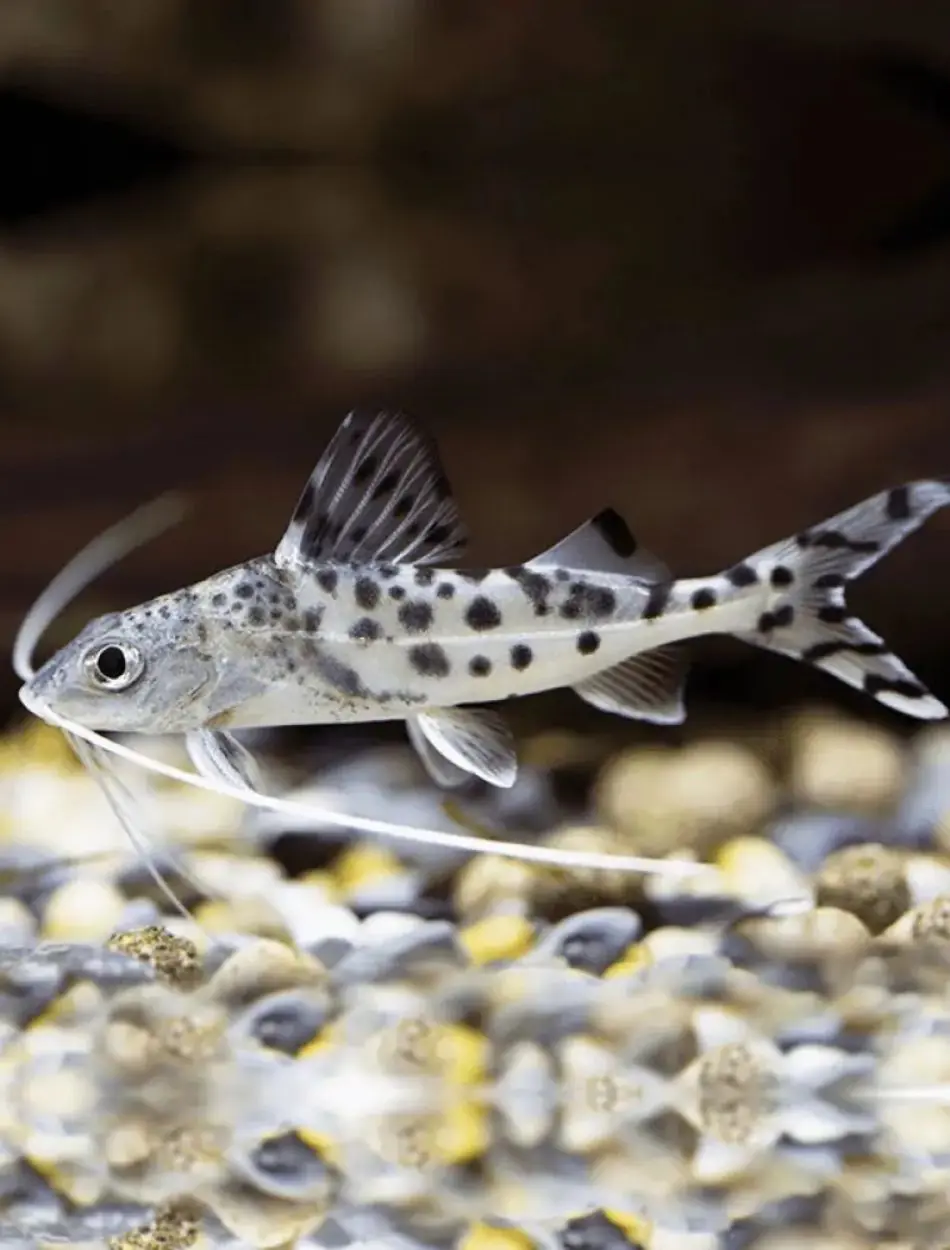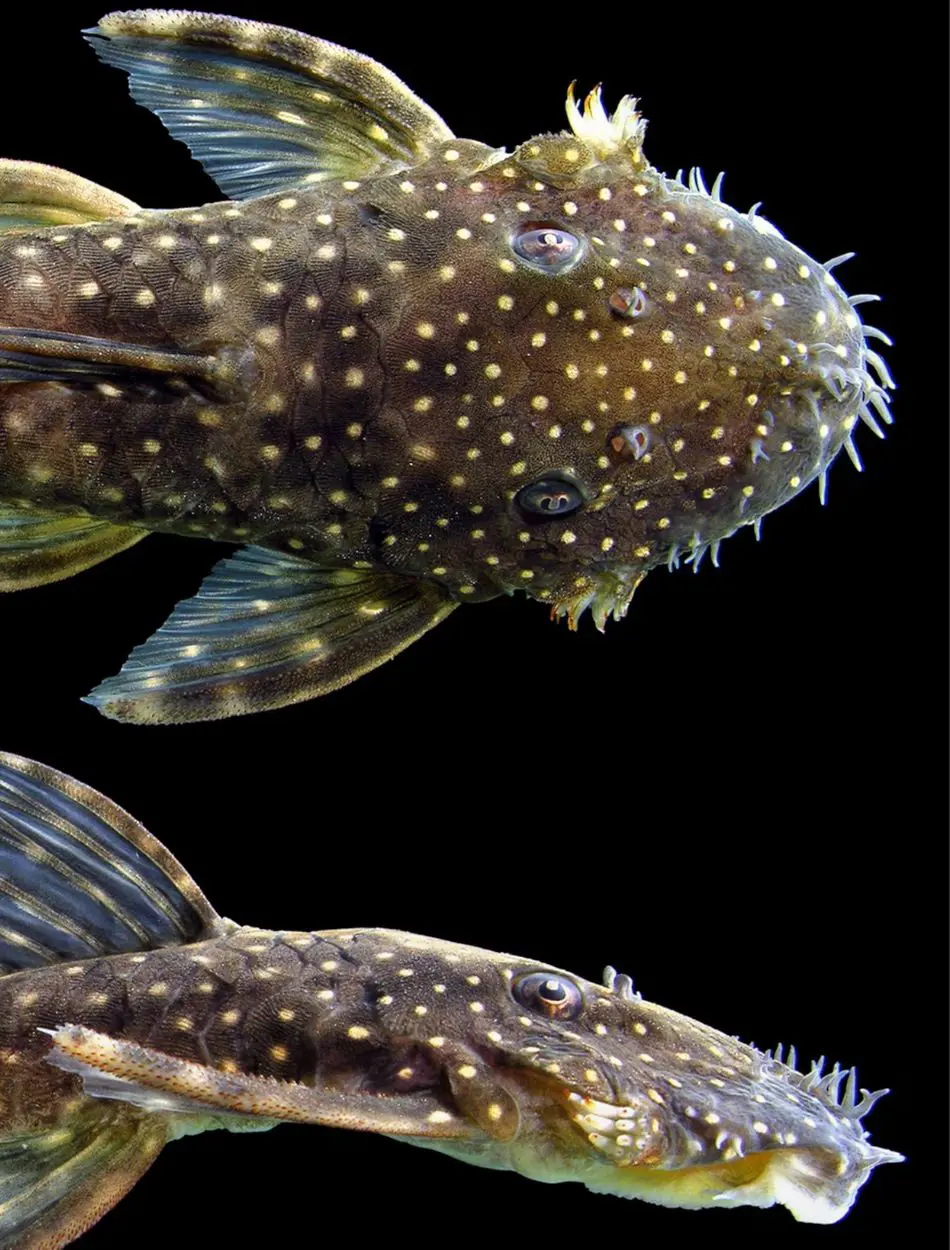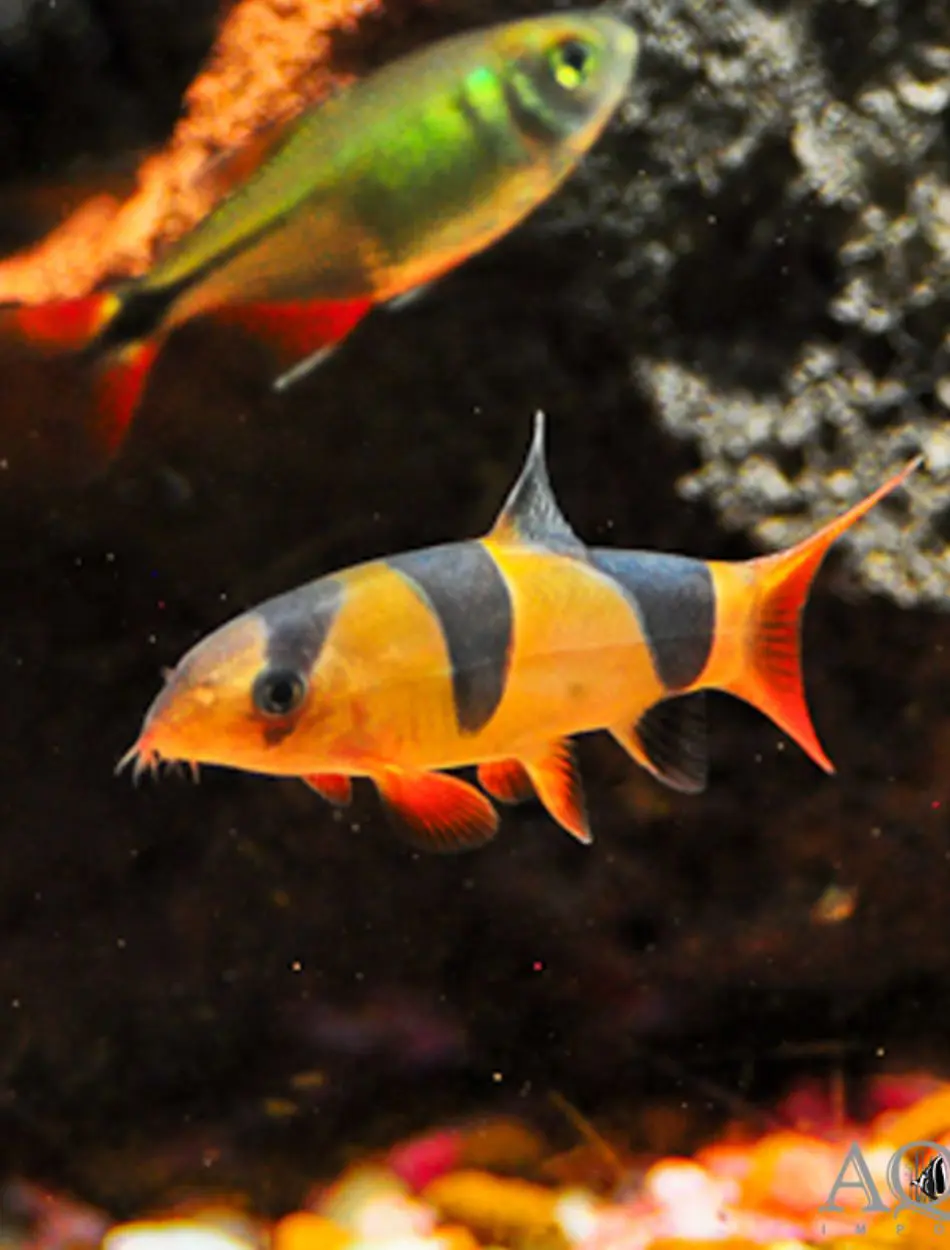Siamese Algae Eater Care Guide And Tank Mates
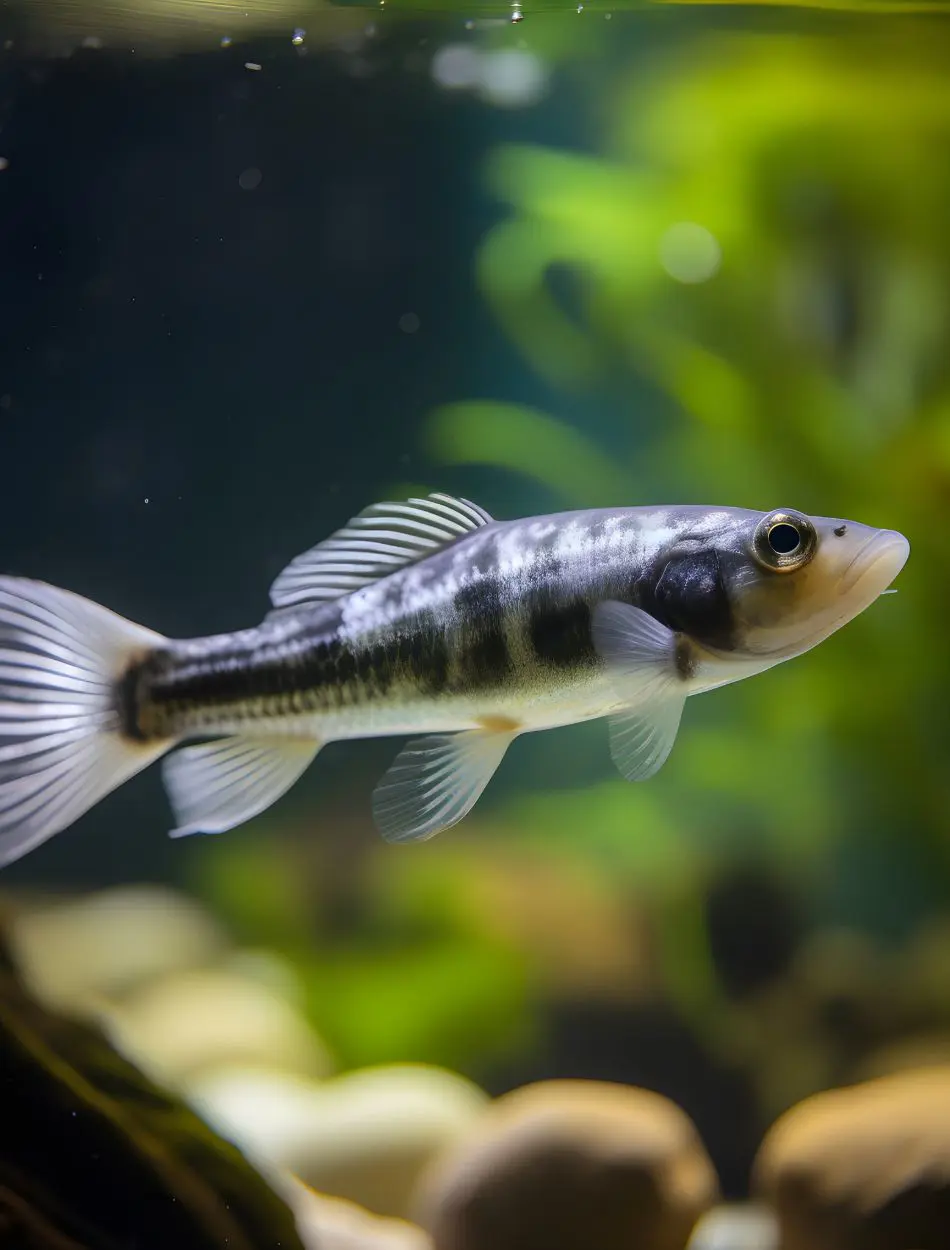
The Siamese Algae Eater is a freshwater fish known for its efficient algae-eating abilities, making it a popular choice among aquarium enthusiasts. Native to Southeast Asia, this peaceful species helps keep tanks clean by consuming various types of algae, including the stubborn black beard algae.
Most of them inhabit swift-flowing rivers and streams. Their diet also makes them a beneficial addition to many tanks. Siamese Algae Eaters are also described as being quite active and social creatures, the noisy and merry fellows of any tank.
Physical Description
The body structure of the Siamese Algae Eaters is fairly streamlined, which allows the fish to manage with swift currents. Their body color is basically silver or beige with a striking black horizontal stripe, which starts from the nose all the way to the tail, sometimes having a golden or brass tint on the central part of their upper body.
In addition to this, depending on the mood or stress of the fish, this stripe could turn dark or light. It usually seems to fade while the fish rests. Most individuals only reach 5 to 6 inches, but they have been known to grow over 7 inches. They have a couple of small barbels on their mouth that help them forage success. Unlike a few similarly appearing species, this black stripe through the Siamese Algae Eater extends through the tail fin.
Setting The Right Tank For Siamese Algae Eaters
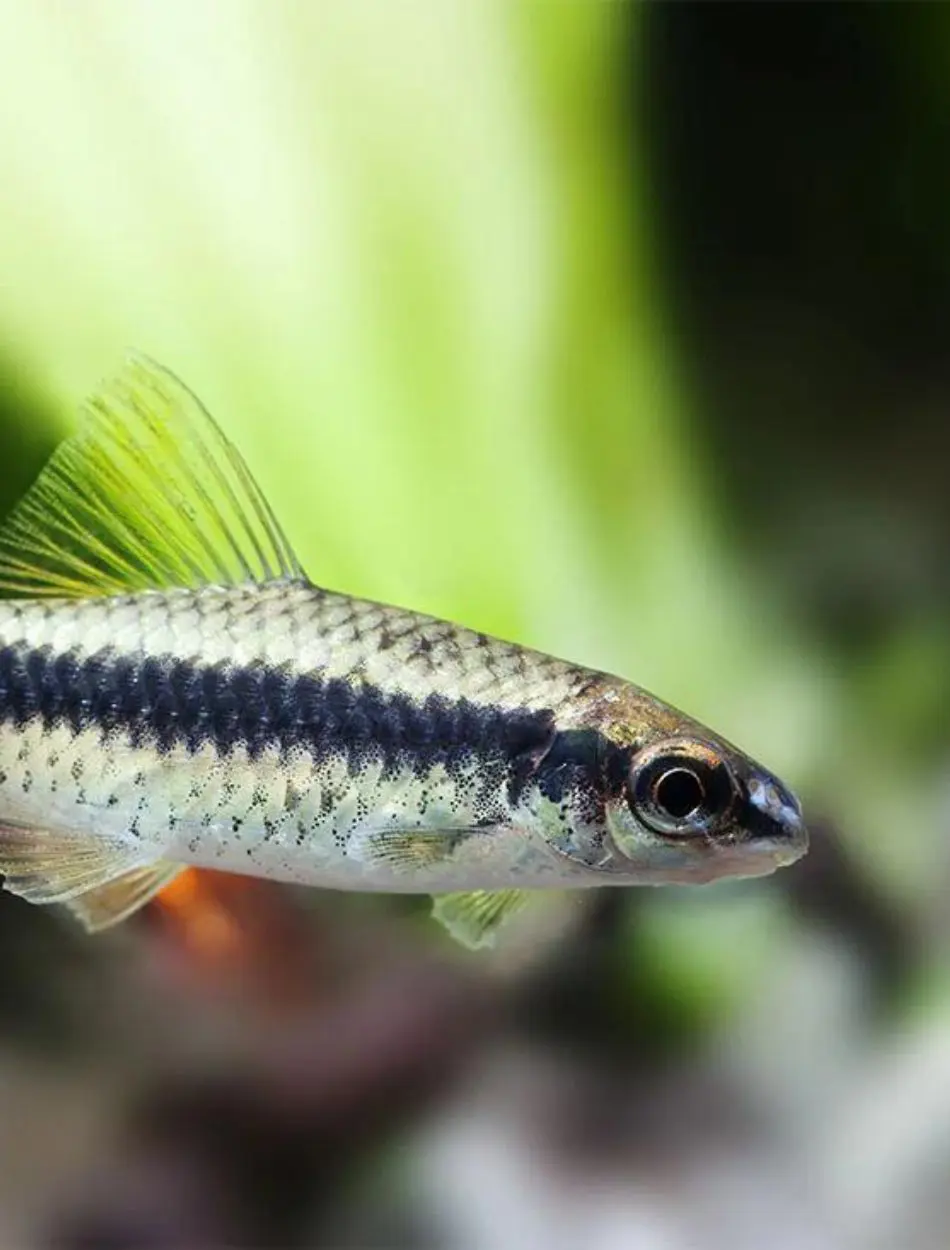
Tank Size
Siamese algae eaters are very active swimmers and require a lot of space for all their exploratory behavior and foraging. A minimum of 30 gallons is good for at least a small group of these fish, though larger tanks will be preferred, especially with other species.
Go for tanks wide and long enough, providing plenty of horizontal swimming space. As they are social fish, it's best to have at least 4 to 6 of them to prevent stress and encourage natural behavior.
Water Parameters
Supply the tank with a well-oxygenated water source and a moderate current. Siamese Algae Eaters prefer temperatures ranging from 75 to 79º F, pH between 6.5 and 7.5. They prefer soft to moderately hard water in which the general hardness is between 5 and 20 GH. Regular water changes are necessary, which will help in keeping up the water quality since these fish are sensitive to high nitrates and other pollutants.
Tank Setup
The tank should be well-decorated with plenty of plants, rocks, and driftwood. This is not only to provide hiding spots but also to grow algae on the surfaces. But also make sure there is a good open swimming space.
Siamese Algae Eaters are very active fish and love to boom around the tank. Keep a sandy or fine gravel substrate as these fish love to forage along the bottom. Since they are originally from streams with fast flow, a good filtration system that can create a gentle current is necessary to simulate their natural environment.
Lighting
Excessively bright lights can stress these fish, but it may help to grow algae, which they will gladly eat. Make sure there is a safe lid on the tank, as Siamese Algae Eaters are jumpers, too, particularly at times of shock.
Feeding Habits
It's important to recognize that they get enough to eat, especially in clean tanks where there may not be a lot of algae on which they may feed. Without enough supplementary food, Siamese Algae Eaters may become emaciated or begin nipping on the fins of other fish.
Diet In The Wild
Siamese Algae Eaters represent omnivores. Their diet predominantly contains algae and periphyton, with the inclusion of plant matter and small invertebrates and detritus. The barbels identify food on surfaces and in the substrate, while the substratum is being swallowed and algae is scraped off by the specialized mouthparts.
Feeding In The Aquarium
Feeding in the aquarium should reflect the vegetable portion oriented in the feeding diet. They are good eaters of algae, yet this should not be the basis of their food. A healthy diet constituting quality algae wafers and sinking pellets would be further accepted with fresh vegetables like blanched zucchini, spinach, and cucumber. Many also favor live or frozen foods such as brine shrimp, bloodworms, and daphnia as treats that will give them some added protein to really thrive.
Feeding Schedule
Siamese Algae Eaters should be given food in smaller quantities 2 to 3 times a day. Due to their affinity for feeding at the bottom, it is also important to feed in such a way that enough food is made available at the bottom for the Siamese Algae Eater.
Do not overfeed, as overfeeding generally leads to poor water quality and associated health problems. Their food pattern can be observed to see if they are obtaining their own food quantity, usually in a tank with other community fish, which will love more aggressive eaters.
Ideal Siamese Algae Eaters Tank Mates
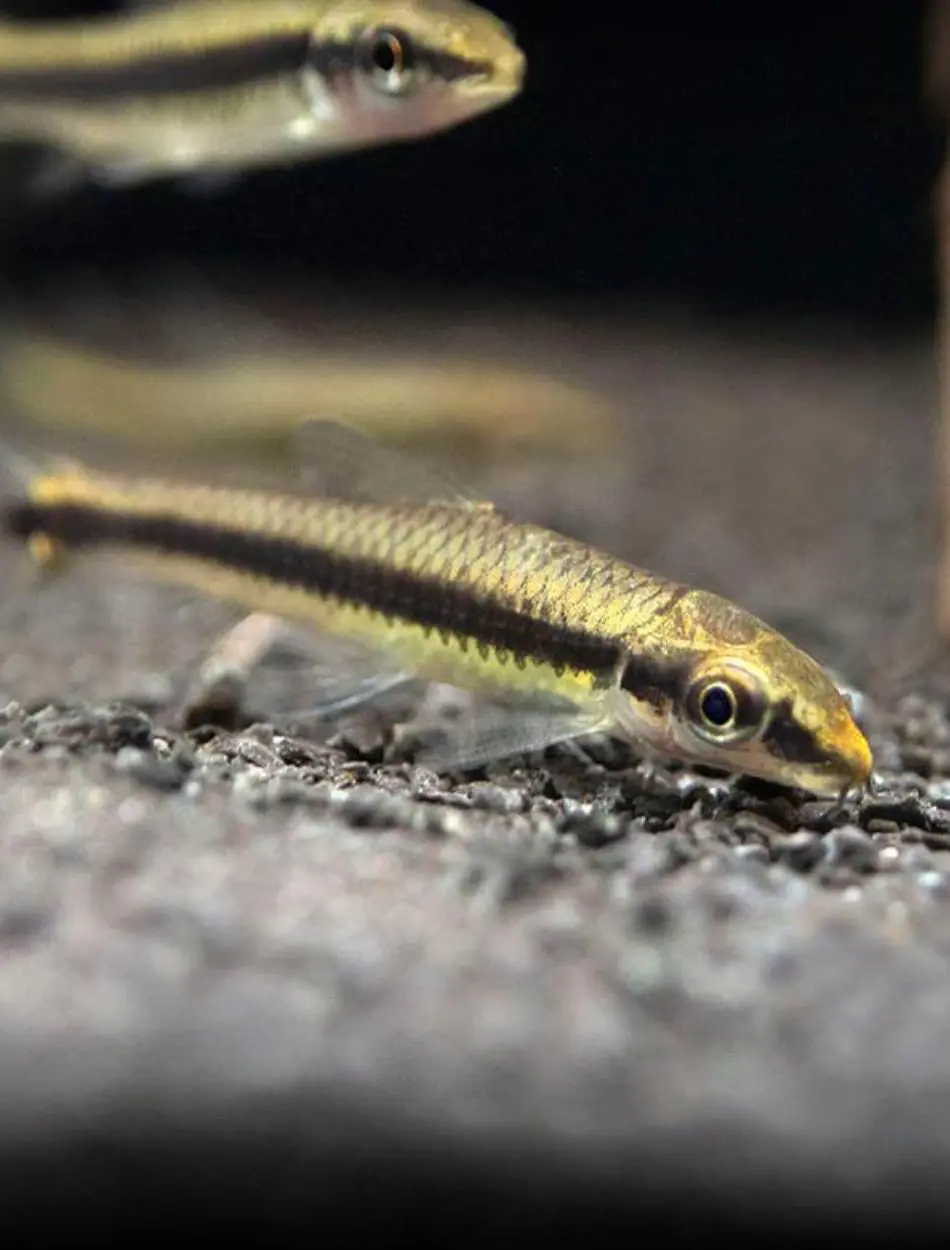
Siamese algae eaters are generally peaceful and can coexist with a large variety of other species of fish. With their very active nature and occasional territorial behavior, they do best with tank mates who can match that energy and are not easy to intimidate.
Tetras
Since the tetras are small, nonaggressive, and active they turn out to be good tank mates for Siamese Algae Eaters. They also have more or less the same requirements for water parameters which makes them even more feasible.
Gouramis
Gouramis are one of the calmer, quieter, and quieter fish that can be in the upper strata of the aquarium, where Siamese Algae Eaters like to stay low and low or even in the middle layer. This unconflict habit in the habitat of these fish can lead them to be an ideal tankmate.
Corydoras Catfish
Small, peaceful ground dweller and equipped with the perfect water condition. They, after all, ideally share identical water conditions and are not likely to fight over territory with the Siamese Algae Eaters.
Barbs
Most of the barbs are nippy, but this works well since the more peaceful lot, like the Cherry Barbs, can go well with Siamese Algae Eaters. Their energetic nature complements the loaches.
Unsuitable Tank Mates
They have quite a peaceful temperament, but still, there are a few fishes who just wouldn't hit it off with the Siamese Algae Eaters, mainly because of contrasting behavior, size, or environmental needs.
Aggressive Cichlids
These are large and territorial, meaning they can see small and other peaceful Siamese Algae Eaters as rivals that may lead to stress or injuries. Mainly Oscars, Jack Dempseys are some aggressive cichlids that are not suitable to share tanks with these fish.
Slow Moving Fish
The active, even sometimes boisterous nature of Siamese Algae Eaters may stress slow moving or shy fish like Bettas or Discus, and this stress may cause potential health hardships for the very delicate species.
Angelfish
These may do well occasionally, but they will become highly territorial, especially as they mature or during breeding. They will sooner or later fight with the more active Siamese Algae Eater.
Goldfish
The temperature and water quality requirements of goldfish and Siamese Algae Eaters, amongst other things, differ. Besides that constant activity can have a contrary effect on the more sedate inhabitants of a tank, such as your goldfish.
Shrimp and Small Invertebrates
While primarily an algae eater, the Siamese Algae Eater is known to graze on shrimp and other small, non algae based invertebrates you may keep in your tank. This mostly happens if they are under fed or if the supplies of desirable algae are exhausted.
Large Predatory Fish
This fish should not cohabit with any fish large enough to typify the Siamese Algae Eater as prey. Such fish include large catfish, arowanas, and some types of eel.
Breeding
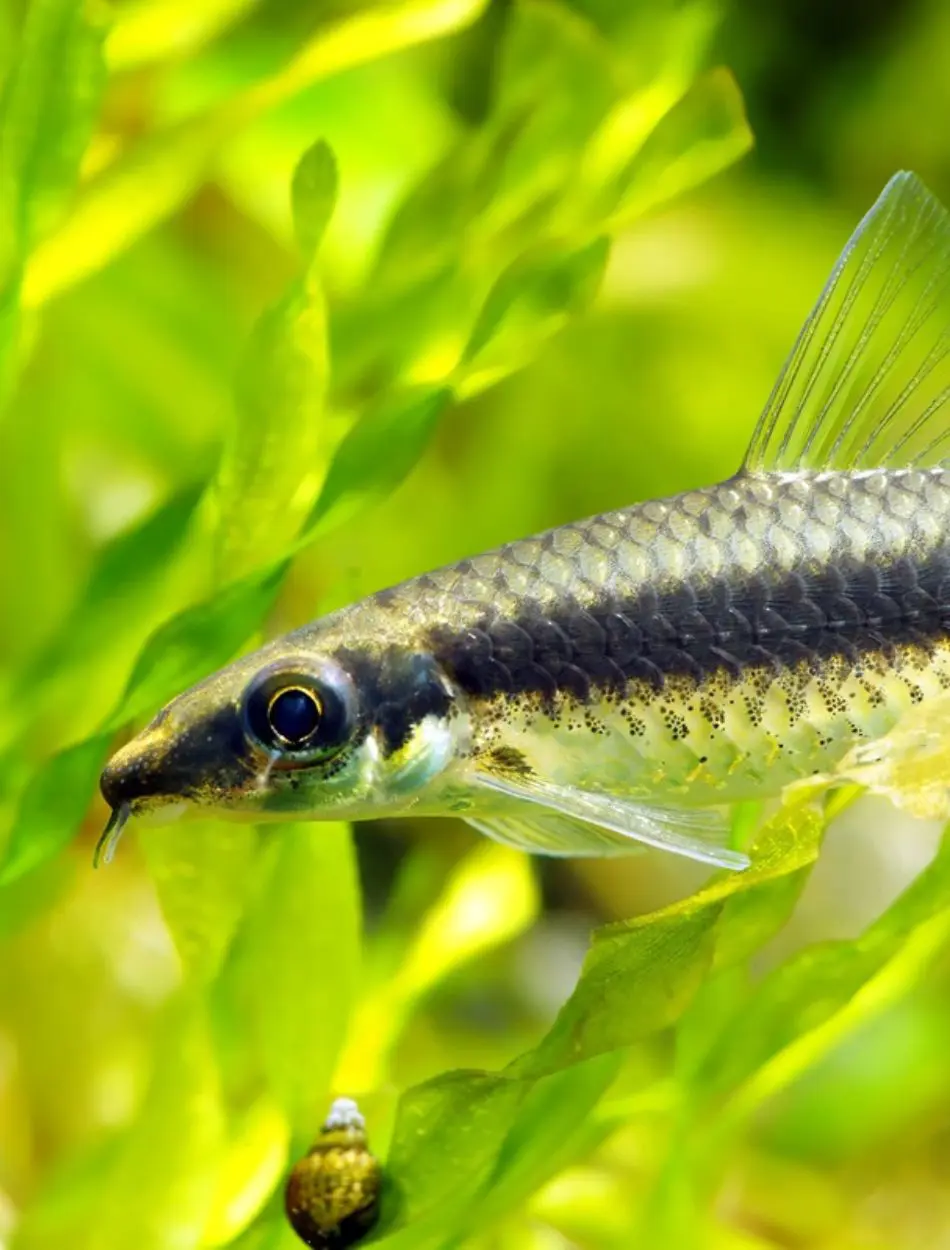
Breeding Siamese Algae Eaters in captivity is extremely difficult and rarely accomplished by aquarists. Nevertheless, knowledge about their breeding requirements and their behavior related to breeding can be informative for anyone who wants to give it a try.
Breeding Conditions
By nature, Siamese Algae Eaters are known to be prolific spawners within the rainy season when water levels are high and food is in plenty supply. To simulate such a condition within a home aquarium, the water temperature within the tank may be slightly lowered and this should be complimented with soft and slightly acid water.
Dense vegetation with fine leaved plants should be in the aquarium to serve as shelter for the eggs and fry. For this purpose, a separate breeding tank might be required to establish the optimal conditions and safeguard the eggs and fry from adult fish that may eat them. This breeding tank should be dimly lit and have a gentle flow of water and lots of things to hide among.
Spawning Behavior
Under ideal conditions, the male Siamese Algae Eaters will start courting the female swimming alongside them and enthusiastically nudging them toward a suitable breeding ground. Spawning occurs on flat surfaces, for instance, wide leafed plants and rocks. The female will, after which it is fertilized by the male, scatter her eggs. The eggs are sticky and will attach to the preferred surface.
Rearing the fry
After hatching, the temperament of the breeding pair may have a tendency to be cannibalistic towards the fry, so it is best to remove the eggs or the fry as soon as possible into a separate rearing tank, which should be well aerated and filtered.
In 2 to 3 days, the process of egg hatchery finishes and almost within the same time, the fry becomes free swimming. In this stage, the breeders should be given infusoria or liquid fry food until they become large enough to be given finely powdered flake food or powdered fry food. The water should be kept immaculately clean if the fry are to survive and grow.
Common Health Issues
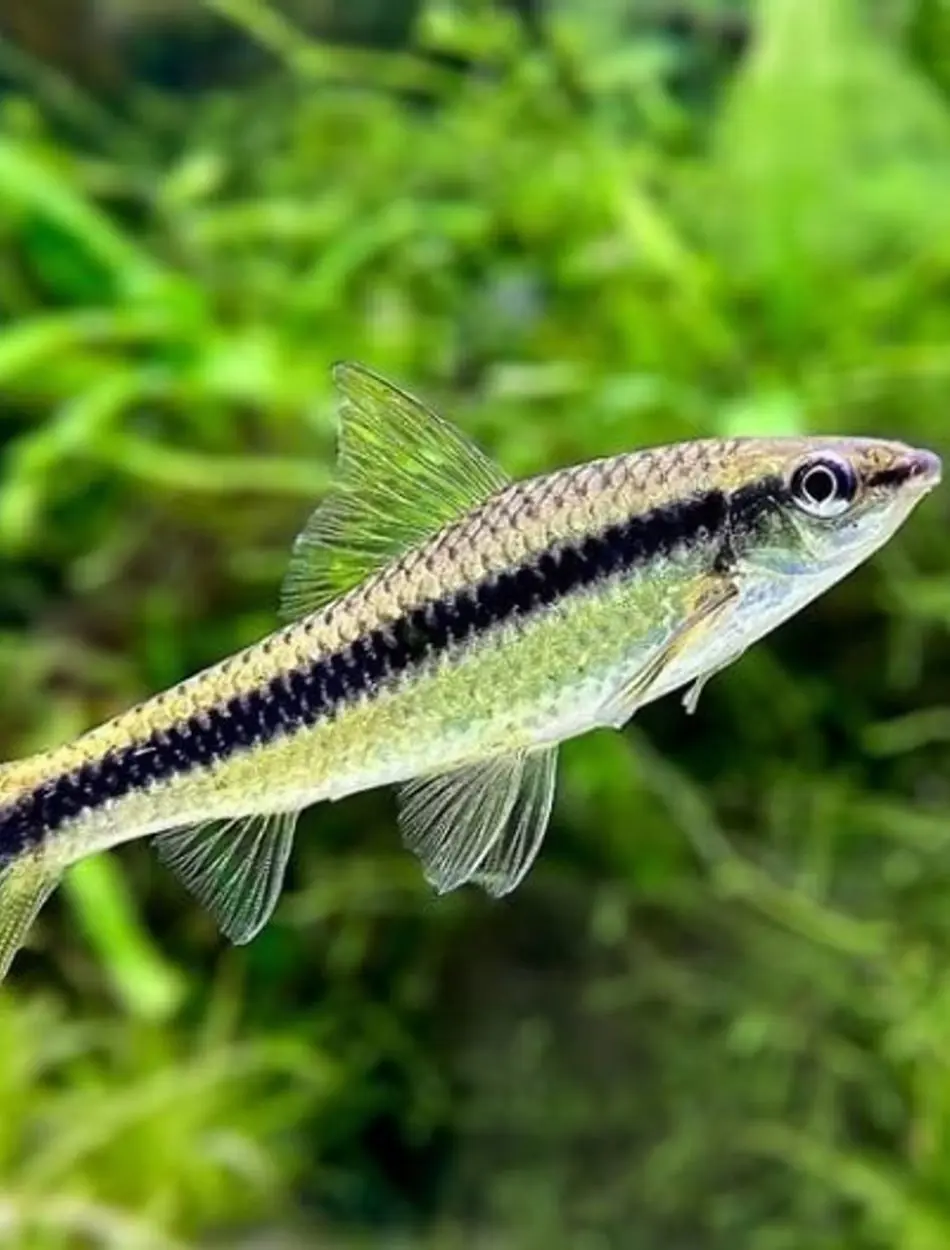
Although generally hardy, the Siamese Algae Eater is not immune to common freshwater fish diseases. Early detection and treatment can be of the essence for the overall health.
Ich (White Spot Disease)
Ich is a very common parasite infection that will appear as small, white spots on the body, fins, and gills of the fish. Siamese Algae Eater is quite prone to Ich if it has been previously stressed or if it has been kept in poor water conditions. The treatment usually involves raising the temperature of the water and adding a medication that targets Ich disease.
Fin Rot
Fin rot is when a bacterial infection is literally eating away the fins so they begin to disintegrate and fray. The reasons behind it are most often poor water quality or injury, which might be caused by overly aggressive tankmates. The treatment of this infection is the procedure to improve water conditions and the use of antibacterial medications.
Internal parasites
These fish are sometimes attacked by internal parasites and produce symptoms like wasting away lethargy, and loss of appetite. Specific disease agents have to be given in a full targeted treatment in the form of medicated foods or as water treatments.
Skin Flukes
Skin flukes are parasitical worms that cling to the skin and cause irritation. This also results in the secretion of excessive mucus and sometimes interferes with respiration, causing shortness of breath. Medicated treatments need to be given to do away with flukes from the aquarium.
Bacterial Infections
Bacterial infections can occur due to poor water conditions, wounds, or stress. Symptoms may include ulcers, reddening streaks on the skin, or erratic swimming behavior. Use broad spectrum antibiotics to treat bacterial infection.
Ethical Considerations
It is important, when concerned for Siamese algae eaters, to consider the ethics bound therewith. This species is often collected straight from the wild, which can have an impact on natural populations and ecosystems. Involvement in tank bred specimens, where possible, will decrease the severity of this impact.
Siamese Algae Eaters are a very social species and will relate well in numbers. Keeping them in isolation or in numbers too low to enable meaningful interaction might stress them out and bring problems to their health. It's a must to always remember these fish are maintained in a community and have enough swimming space and foraging.
Even though there is a tendency to call them great algae eaters, they must never be kept specifically for the reason of eating the algae. They require good care, attention, and proper nutrition because they are also living beings.
Advanced Tips For Siamese Algae Eater Keeper
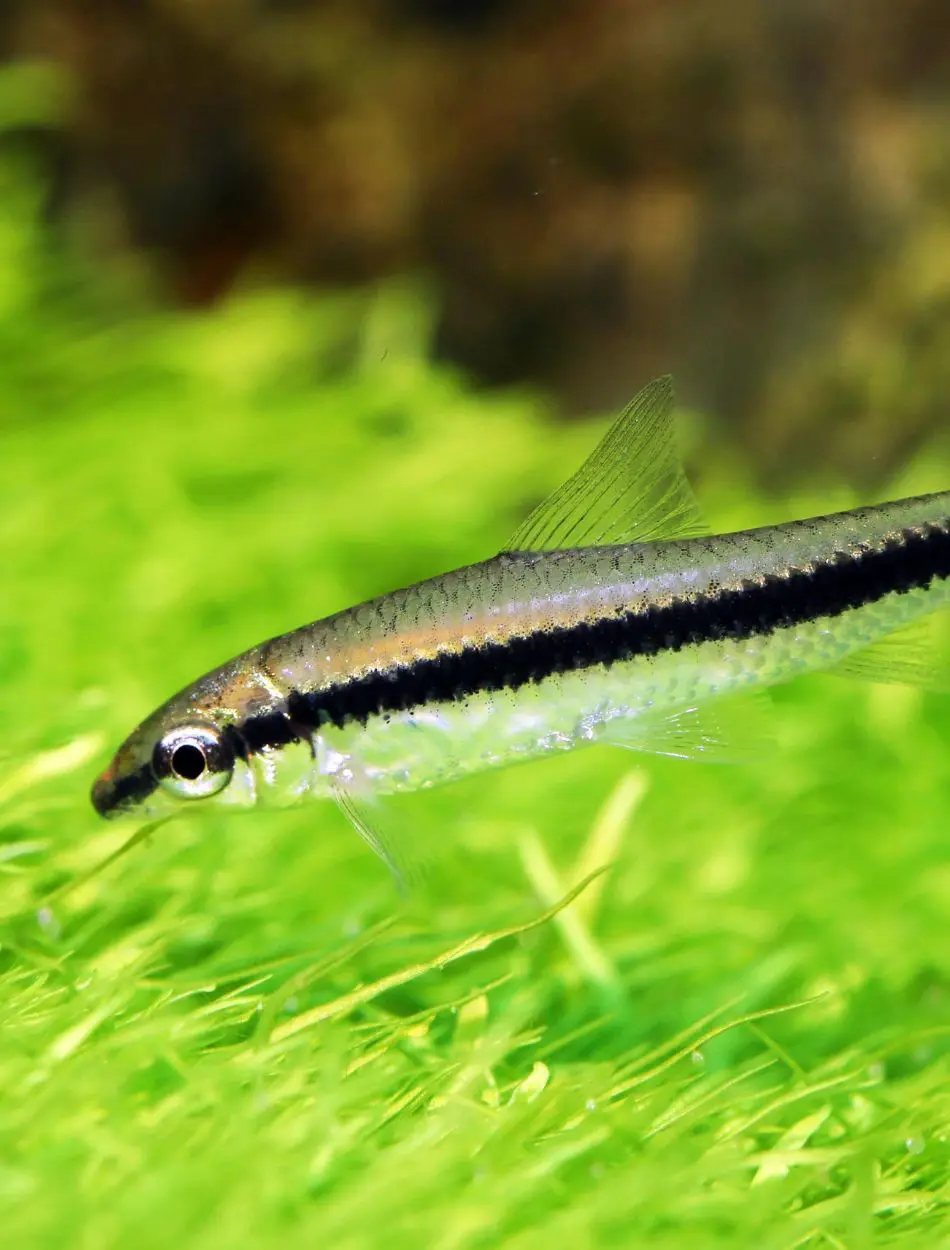
Tank Size and Aquascaping
In bigger, heavily planted aquariums, the Siamese Algae Eaters are easily going to fit in and develop as a part of the ecosystem. Other times, they could contribute towards the maintenance and natural balance of the aquarium concerning the growth of algae. The Siamese Algae Eaters should be provided with sufficient areas of different plants, driftwood and rocks for foraging sustaining their natural behavior.
Algae Control
Though the Siamese Algae Eater does a great job with feeding on algae, there are some kinds of it that will not take. So, in order to control algae in totality, one could get some other species that eat algae, like Amano Shrimp and Otocinclus Catfish, which will help in controlling the other different forms of algae.
Breeding Attempts
If you have an interest in trying to breed Siamese Algae Eaters, then an independent breeding tank is a must. This must have very stringent water conditions and be fully regulated in terms of environment, simulating the various seasons. Patience and keen observations are key, as breeding behaviour is rarely witnessed, and it can many times be very trial and error.
Dietary Supplements
The health and coloration of Siamese Algae Eaters can be easily enhanced through the use of this kind of dietary supplement which can easily include the addition of spirulina-based foods or color-enhancing flakes. Great for providing nutrients that are vital for the fish developments, their colors end up being better in terms of vibrancy.
Health Monitoring
Due to this fact, Siamese Algae Eater health monitoring is of extreme importance and at short intervals, especially in large aquariums, because of the fact that the signs of some diseases can easily go unnoticed. Illnesses such as Ich or Fin Rot are general problems that, when early diagnosed through observation, can easily be treated so that they won't spread in the aquarium and can lead to long fish life.
Environmental Enrichment
In order to prevent boredom and to stimulate more natural behavior incorporate some environmental enrichment in the tank, be that new hiding places, some changes in aqua-scaping, or varying some of the water flow something that will keep the Siamese Algae Eater thinking and moving, and as such will help reduce the likelihood of potential stress related problems.
Top Lists

